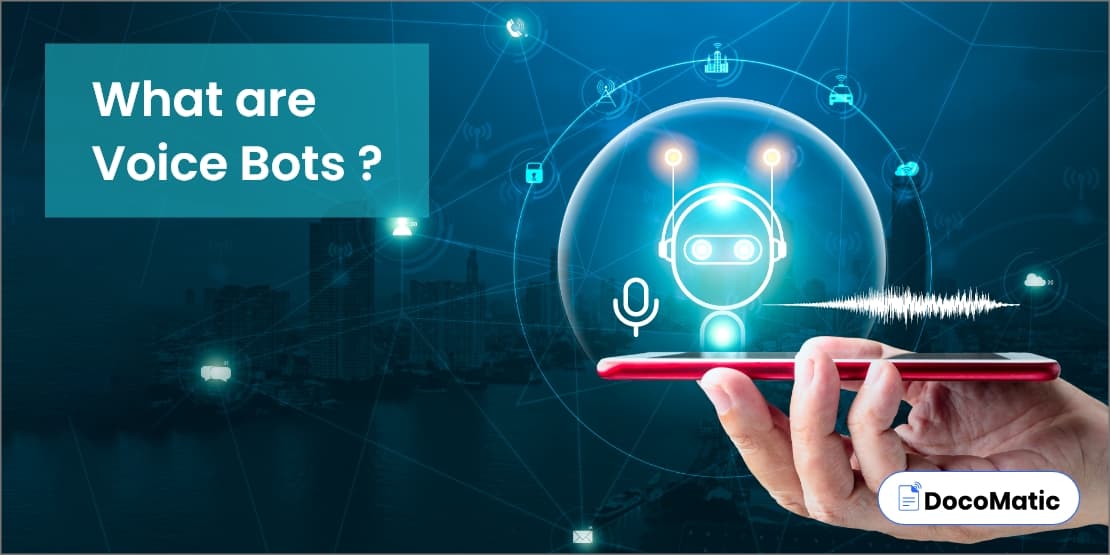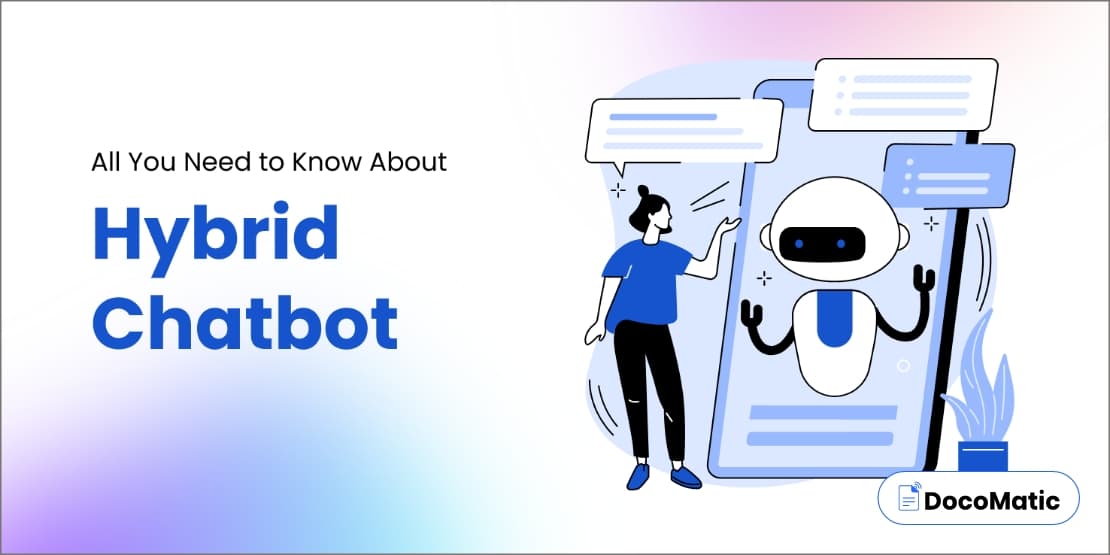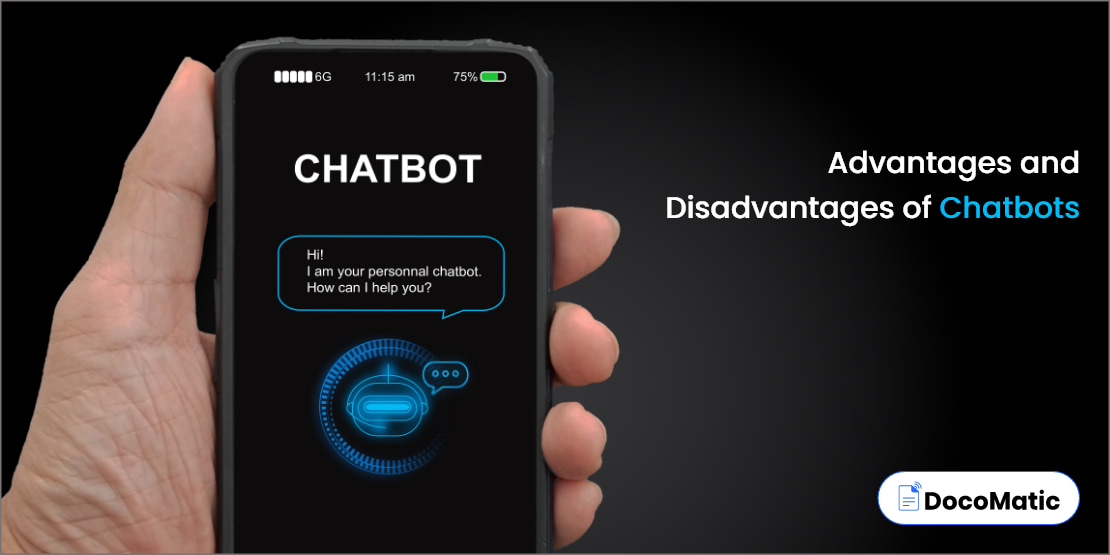Thanks to recent breakthroughs in AI technology, the customer service industry has experienced a profound upheaval. One such change is the emergence of voice bots. It is increasingly gaining acceptance as a practical and effective means of interacting with consumers.
According to Future Market Insights’ most recent industry report, voice assistants application market revenues were assessed at US$ 2.8 Bn in 2021 and are projected to increase at a CAGR of 18.5% from 2022 to 2032. The market is anticipated to grow to a US$ 20.2 billion valuation by the end of 2032.
This blog post will thus cover all you need to know about voice bots, including how they work, their benefits, and their limitations.
So take a seat back, unwind, and get ready to explore the world of voice bots!
Table of Content
What are Voice Bots?
Voice bots are computer programs that interact with people using natural language processing (NLP) and voice recognition technologies. They essentially function as conversational solutions that accept voice instructions as input and reply by producing voice output.
Voice bots are essentially virtual assistants that can carry out a variety of functions, including scheduling appointments, executing transactions, and responding to routine consumer inquiries.
Conversational interactive voice response (IVR), automatic speech recognition (ASR), text-to-speech (TTS), and Dialog Flow are the technologies that underpin voice bots and allow machines to comprehend and respond to human language. Customers can actually communicate with voice bots as bots have natural language understanding, just like live customer support human agents.
Voice bots have the ability to manage several consumer inquiries at once without the assistance of a human, which is one of their main advantages. This indicates that businesses can reduce the amount of time and money spent on hiring customer care representatives while still offering their clients a high level of assistance.
Types of Voice Bots
Based on their features and how they communicate with users, voice bots can be classified into various categories. Popular types of voice bots include
- Informational voice bots: These voice bots respond to users’ questions or provide them with relevant information on a certain subject.
- Transactional voice bots: These voice bots let users complete transactions like bill payments, reservations, and meal orders.
- Conversational voice bots: These voice bots have natural language understanding. So, they converse with users in natural language, mimicking human interaction.
- Voice-enabled virtual assistants: These voice bots provide customers with individualized support by handling tasks like appointment scheduling, email management, and creating reminders.
- Voice-enabled IoT devices: These voice bots are integrated into Internet of Things (IoT) devices, allowing users to command smart home appliances like lights, thermostats, and security systems with their voice.
How Do Voice Bots Work?
Voice bots work by using natural language processing (NLP), machine learning, and speech recognition technologies. The contribution of each of these components to the operation of the voice bot is broken down as follows:
- Voice recognition technology: This technology turns the customer’s audio signal from speech to text so that the NLP system can evaluate it.
- Natural language processing (NLP): This system deconstructs the customer’s query into its various components, such as keywords, entities, and intent.
- Machine learning algorithms: These algorithms train the voice bot to detect patterns and comprehend the context of the customer’s question using the data supplied by the NLP system.
The voice bot can respond in normal language once it has understood the customer’s query. The business can pre-program this response or create it in real time using information from the customer’s account or previous conversations with the voice bot.
With continuous interactions and training, voice bots can pick up new skills and improve over time. Voice bots can improve customer satisfaction and experience by adapting and fine-tuning their responses by evaluating consumer interactions and feedback.
It is crucial to keep in mind that voice bots are not perfect and occasionally misinterpret or fail to comprehend a customer’s request. Businesses must have a backup plan in place in these scenarios to ensure that clients can continue to receive the assistance they want.
Benefits of Using Voice Bots
Voice bots provide a variety of benefits both to customers and businesses. Discussed below are some of the key benefits:
- Improved customer experience: Voice bots give customers a quick and simple way to access the information they are looking for. They no more have to work their way through difficult menus or wait on hold for a customer service human agent. This results in enhanced customer engagement with positive consumer experience and a boost to repeat purchases.
- Increased efficiency: Voice bots can help organizations save time and lessen the stress on their customer service teams by automating the process of responding to frequently asked questions and addressing simple queries. This increases overall efficiency by enabling support staff to concentrate on more complex inquiries and issues.
- 24/7 availability: Voice bots can offer consumers round-the-clock assistance, even beyond regular business hours. Businesses that operate across several time zones or have clients throughout the globe might find this to be extremely helpful.
- Cost savings: Voice bots can help organizations cut labor costs by reducing the workload of customer support staff and automating routine activities. Moreover, voice bots can respond to a lot of inquiries at once, eliminating the need for extra workers during busy hours.
- Personalization: Voice Bots can offer personalized customer experiences by recognizing previous customer interactions and data. Based on the customer’s choices and their interaction with the business, this can include customized recommendations or solutions.
- Scalability: Voice Bots are easily scalable to meet the increased workload as organizations expand and the number of client inquiries rises. They are therefore an affordable option for businesses of every size.
Challenges of Implementing Voice Bots
Voice bots provide a variety of benefits for organizations and customers, but they also present significant implementation challenges. Here are a few of them:
- Technical complexity: Building a voice bot AI and integrating it into an existing system can be challenging. For smaller organizations or those without an internal development team, it might be difficult because it demands technical knowledge and resources.
- Accuracy of speech recognition: When dealing with accents or dialects, automatic speech recognition accuracy can still be problematic. Customers may become irritated as a result of their queries being misunderstood and receiving incorrect responses.
- Limited use cases: At the moment, simple tasks like answering frequently asked questions or giving basic information are where voice bots are most useful. Voice bots’ usefulness may be constrained due to the necessity of human intervention in immensely complex tasks or scenarios.
- Data privacy and security: Concerns about data privacy and security arise with the use of voice bots, just as they do with other customer data. Businesses have to ensure they are adhering to data protection laws and taking the necessary precautions to secure customer data.
- Customer acceptance: Some customers may still want to communicate with a human agent as opposed to a voice bot AI. This can be a result of wanting a more tailored experience or having less faith in technology.
- Maintenance and updates: Voice bots require constant maintenance and upgrades to be functional, just like any other piece of technology. For businesses without specialized resources or knowledge, this might be difficult.
Successful Use Cases of Voice Bots
Several businesses, including healthcare, banking, and retail, have successfully used voice bots. Some of the most noteworthy use cases are listed below:
- Healthcare: Voice bots have been deployed to offer virtual support and individualized treatment to patients.
- Finance: To give clients rapid access to account information and facilitate straightforward transactions, voice bots have been utilized in the financial sector.
- Retail: Personalized shopping experiences have been offered to customers using voice bots in the retail industry.
- Hospitality: In the hospitality sector, voice bots have been employed to offer visitors personalized service and rapid access to information.
- Entertainment: Voice bots have been utilized in the entertainment industry to improve the viewer’s experience.
These effective applications for voice bots show their adaptability and potential to enhance the customer experience in a variety of sectors. Future years will likely provide even more cutting-edge use cases as technology develops.
FAQs
Conversational AI refers to the set of technologies like chatbots or virtual agents which are capable of imitating human like interactions, recognizing speech and text inputs as well as translating their meanings across various languages. This has been made possible because of the integration of natural language processing capabilities.
A voice bot is a computer program that simulates interaction with users using voice-based interfaces, whereas a chatbot simulates interaction with users through text-based or messaging interfaces.
Voice bots can be integrated with other technologies like AI (Artificial Intelligence), ML (Machine Learning), and IoT (Internet of Things), so the answer is yes. This enables them to carry out more complex tasks and offer more sophisticated services.
Yes, voice bots can be programmed to comprehend multiple languages. Voice bots can analyze and comprehend a wide range of languages and dialects with the use of natural language processing (NLP) and machine learning algorithms.
The cost to implement voice bots might change based on the project’s complexity and the amount of customization required. Nevertheless, integrating voice bots has become more accessible and economical for businesses of all sizes thanks to the availability of pre-built voice bot platforms and the breakthroughs in AI (Artificial Intelligence) and ML (Machine Learning).
Conclusion
You must know about chatbots and their benefits for your business, but voice bots are revolutionizing how businesses offer customer service by providing 24/7 assistance and quicker response times. Voice bot implementation might be challenging, but the benefits they provide make it worthwhile.
The potential of voice bots is enormous as technology advances, and their integration with other technologies like artificial intelligence (AI) and machine learning (ML) is expected to further improve their capabilities. The AI voice bot will play a bigger role in providing fast and helpful service as businesses try to offer a more personalized customer experience.






